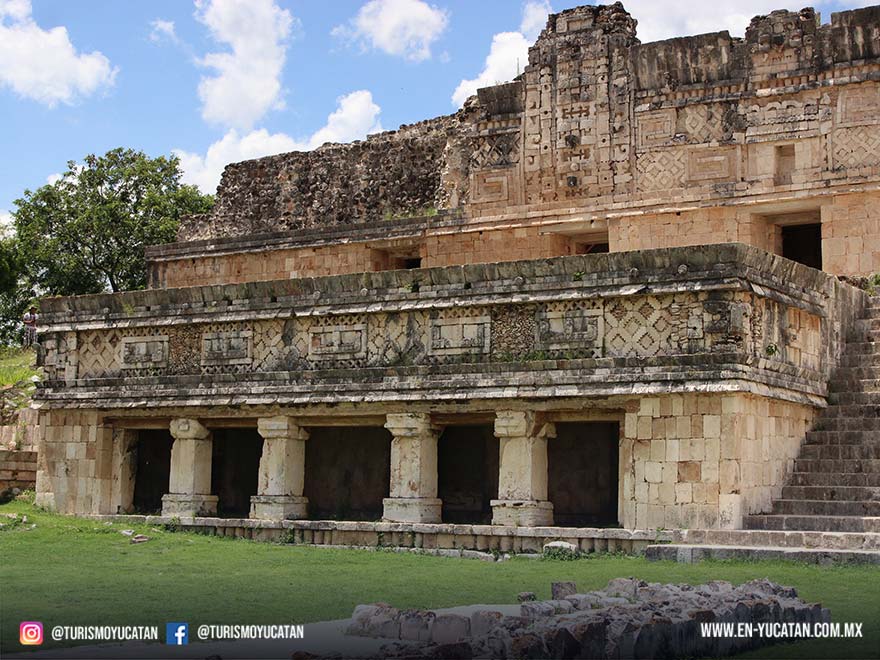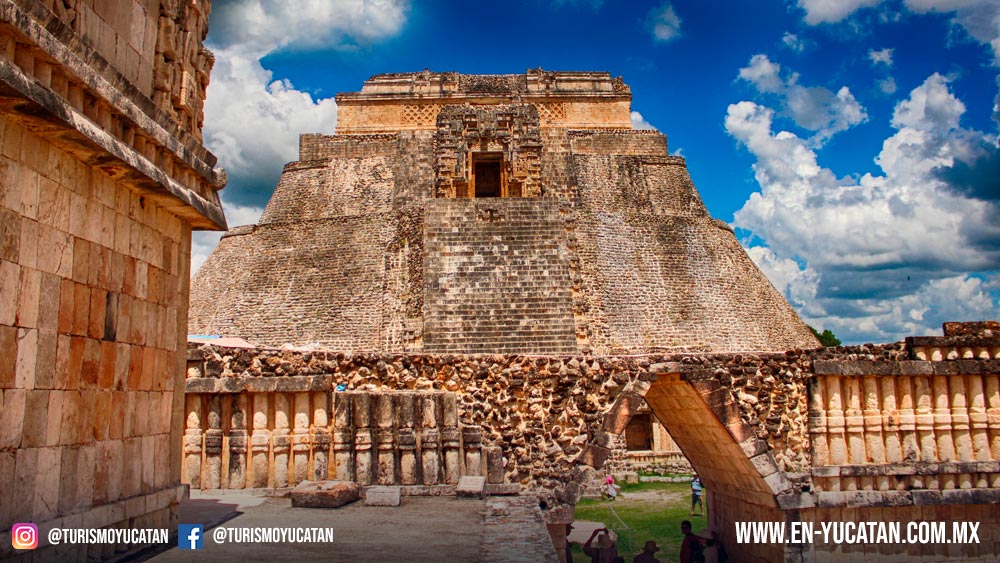Uxmal, surrounded by legends, myths and anecdotes; poetic in its name and its history, It is located in the Santa Elena valley next to a series of hills that are known by the name of Puuc, which in the Mayan language means "mountain range", and which was the name that later received the architectural style of the sites in that region.
The occupation dates back to 500 B.C., however, during the 9th and 12th centuries A.D. It was the seat of the Mayan peninsular political and economic power in the Puuc region.
It is estimated that it had a population of close to 25 thousand inhabitants, distributed in a territory of 37.5 km2 with enormous agricultural potential, but lacking permanent sources for the use of water, which is why the Mayans built Chultunes, or water reservoirs, and a complex system of aguadas and bukteoobob, to take advantage of rainwater.
Its architecture is one of the most authentic examples of the Puuc style, some decorative elements such as the masks of the god Chaac, columnillas, the double-headed jaguar and other iconographic symbols make manifest the insertion of Uxmal in the most important cultural and commercial circuits of the classical period. Maya.
The civic-administrative area is walled and occupies an area of 1 km from north to south and .6 km from east to west. The buildings are of the "palace" type, arranged around courtyards formed by quadrangles. Its decoration is one of the richest and most varied, with representations of gods, animals, characters and geometric shapes. There are also buildings of a residential nature in the vicinity.

Agriculture was one of the main occupations of the population of Uxmal, which being a village community became an administrative political center where, as in other Mayan sites, all expressions of man flourished. An example of this was the construction of hydraulic works to collect and conserve drinking water.
These practices were first materialized in the chultunes (cisterns), also making adaptations to the land depressions that formed the aguadas. At that time a group of individuals controlled political and economic power, since society recognized them as intermediaries between men and divinities.
Uxmal, as already mentioned, is one of the best examples of the Puuc architectural style but near there, we can also delight in other areas that have the same style and that at the time were important Mayan cities such as: Kabah, Sayil , X-Lapak, Labná, Oxkintok, Calcehtok Caves and the Loltún Caves. . In them you can find fully restored structures, others in process and some still covered with grasses, trees and dense vegetation.
Mayan Temples and Buildings in Uxmal
Great Pyramid
It has the shape of a truncated pyramid of nine stepped bodies; the upper part is called the Temple of the Macaws.
House of the Turtles
This building contains a series of three central parallel bays, which are accessed through an entrance located to the north and three to the south.
Magician's House
This pyramidal building measures in its entirety around 35 meters high and has an elliptical plan. To date, five phases have been detected.
Quadrangle of the Nuns
This architectural complex is made up of four structures that stand on different platforms arranged around a large patio.
Quadrangle of the Birds
This architectural complex is made up of four structures that stand on different platforms arranged around a large patio.
Governor's Palace
It sits on a platform 8 to 12 m high, 1087m long and 1.70m wide; It was divided into 3 parts separated by transverse vaults.
